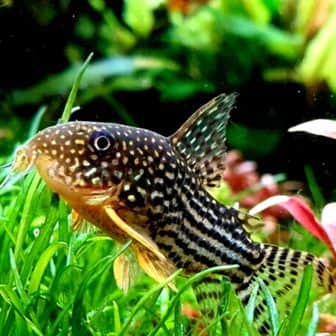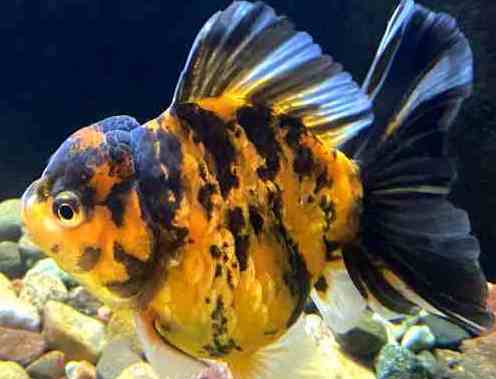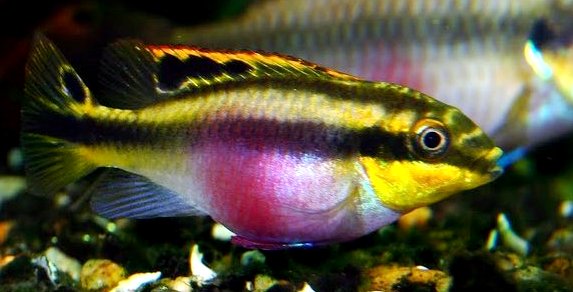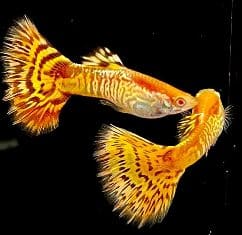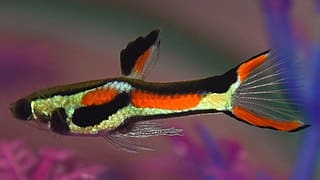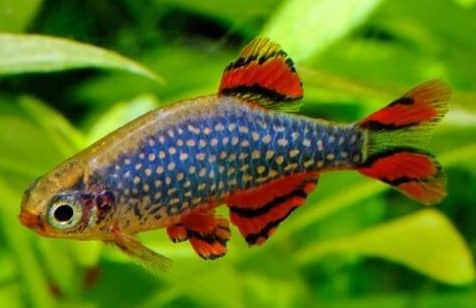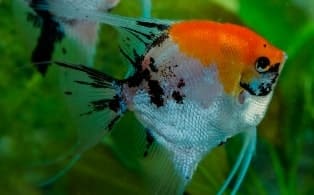How Do I Care For My New Fish Bowl, (or Nano Aquarium)
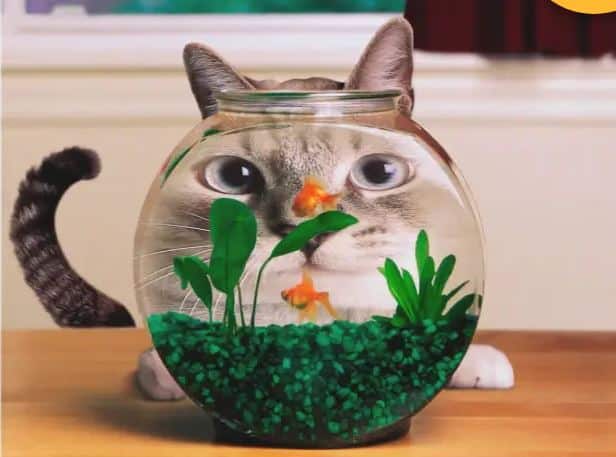
6 steps that will guide you in caring for your fish bowl.
1. To maximize the oxygen levels in the fish bowl, buy a bowl that has high water surface volume in comparison to the other sides of the bowl.
2. Heat your fish bowl. Under bowl heaters are inexpensive, well hidden and your fish will stay healthier.
3. Cycle your fish bowl for at least four weeks before adding fish. Cycling means taking steps to encourage beneficial bacteria to colonize your fish bowl substrate.
4. Keep the correct size of fish in your bowl. Consider adding small fish, freshwater shrimp and snails.
5. Clean your bowl on a monthly basis. This will keep non-beneficial bacteria and harmful protozoa from harming your fish.
6. Don’t overfeed your fish. This can kill your fish and cause your fish bowl to smell bad.
Important considerations when buying a fish bowl
I have a 2 gallon fish bowl sitting on a stand in my bedroom. My primary concern with this bowl is growing aquarium plants. So far I haven’t been successful. I admit I’m treating this bowl as an experiment. I make small occasional changes to see what will happen. My most recent experiment is daily 50% water changes to control algae. So far, this hasn’t worked.
I really need a supply of ramshorn snails to eat the algae. As of this writing, it’s winter. I’ve learned the hard way not to order animals (ramshorn snails, fish, & shrimp) during winter or summer. Where I live, spring and fall are the only safe times to buy fish, snails, or shrimp online. Ordering during the winter or summer is cruel to the animals that are being shipped. They will arrive dead. There’s nothing like warm dead and decomposing snail soup. Yum.
What about you? Did you buy a fish bowl? Are you thinking about buying a fish bowl?
So we are both on the same page. I would define a fish bowl as any small non-traditional aquarium of any shape including fish bowls with curved or straight sides.
A Fish Bowl Review:
The good, the bad and the very bad.
Please note: Any of these designs flaws could be overcome by adding an air pump and an in-tank heater.
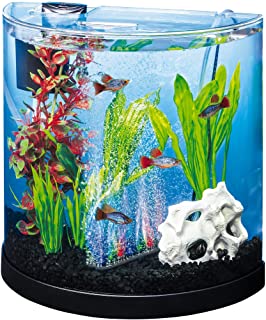
Very poor design
3 gallons
Extremely low surface volume compared to the other sides of the bowl.
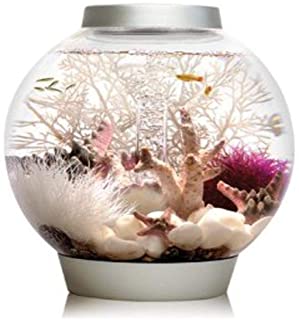
Very poor design
4 gallons
Couldn’t add under-the-tank heating mat.
Extremely low surface volume compared to the other sides of the bowl.
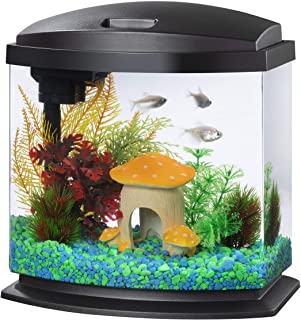
Poor design
1 gallon, 2.5 gallons or 5 gallons
Couldn’t add under-the-tank heating mat.
Low surface volume compared to the other sides of the bowl.
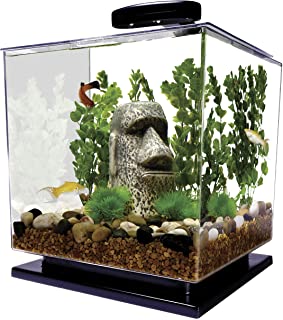
Good design
3 gallons
Couldn’t add under-the-tank heating mat.
High surface volume compared to the other sides of the bowl.
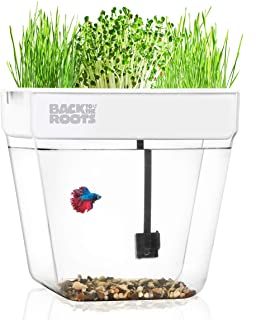
Very good design
**(My choice for best fish bowl design)
7 gallons
Very high surface volume compared to the other sides of the bowl. Large 7 gallon volume.
Also:
1. The size of the fish bowl shouldn’t be too small. If a fish bowl is too small, the volume of water in the bowl will evaporate so quickly you might have difficulties in maintaining water levels.
2. The surface area of the water should be as large as possible. This is because oxygen is transferred from the air into the water through the water surface. If the water surface is too small compared to the volume of water, the oxygen level in the water will become too low. This will either harm your fish or kill them. Aquarium bowl #4 above is an example of a very common yet very poor design.
The very best fish bowl shape would be a shape like #5 where (looking at the water as if it were six sided without the bowl) the surface of the water is larger than the other sides of the water. Its dimensions are 13.4” L X 13.4” W X 9.5” H. To get the volume in gallons, multiply all three numbers by each other and then divide by 231. This means that the volume of tank #5 is 7.38 gallons. That’s an amazingly large fish bowl. Your fish would probably thrive in that fish bowl.
Heating your fish bowl for cheap. What? Really?
Most people don’t consider heating when setting up a fish bowl and yet adding a heater for the sake of the tropical fish is super easy and very inexpensive.
What I recommend is the same type of heater I have for my two gallon square fish bowl. An under the bowl, reptile heating mat. Like this one:
Tap the picture to view the price on Amazon.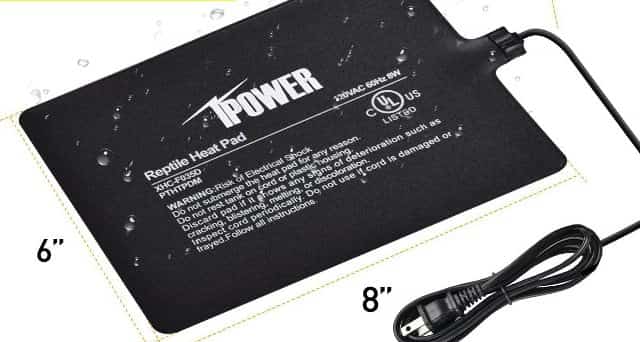
This heating pad keeps my fish bowl a roasty, toasty 78 degrees Fahrenheit (25.5 C). It’s hidden, and it only costs $12 as of this writing.
FYI: The reptile heating pads need to be in full contact with the bottom of the fish bowl to do the job. If this isn’t possible you’ll need to go with an “in the tank” heater.
If you look closely, in the middle of the picture of my 2 gallon, seen through the water, is a black wire coming up from the heater. This heater lays flat underneath (not in) the aquarium bowl.
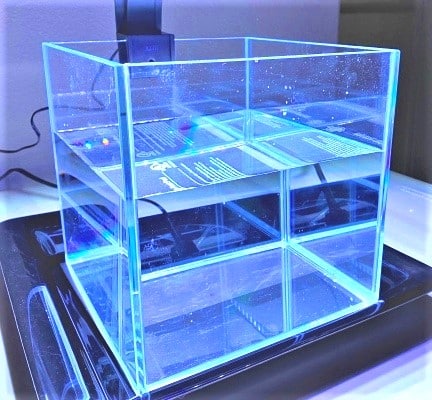
I have the fish bowl sitting on a nice plastic tray to keep water from splashing on my furniture.
For the last word on fish bowl heating from an expert, read this scientific paper, which basically says that warm water is good for beneficial bacteria (I cover beneficial bacteria in the next section of this paper: Fish Ammonia)
Do you want to grow Amazon Sword plants like the ones below that I grew?
Tap this box to buy them (and other aquarium plants) on Amazon.
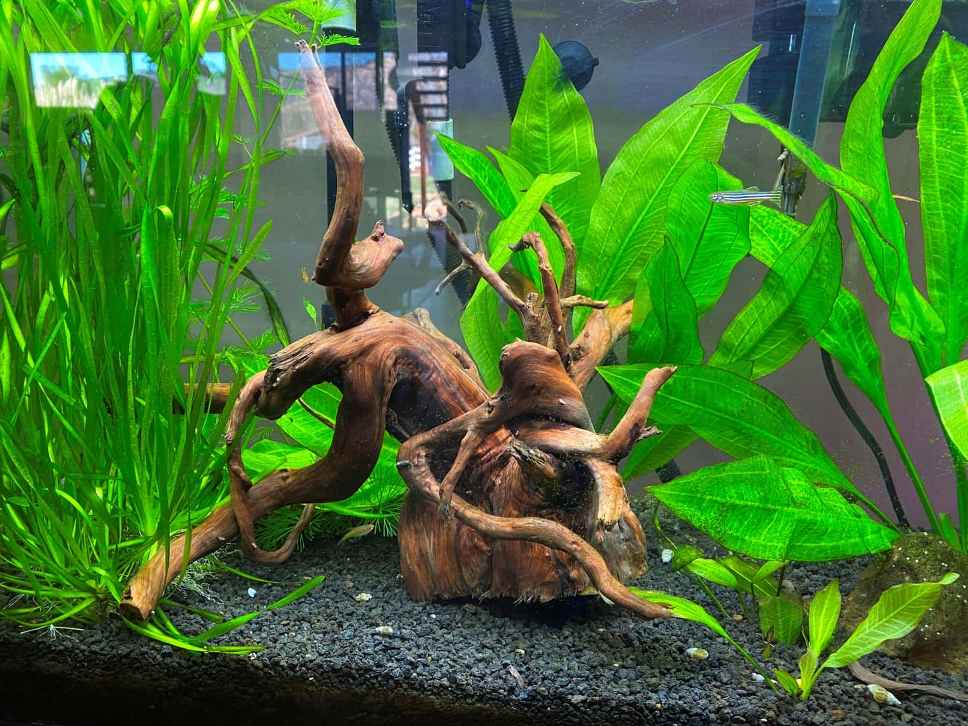
Or maybe you want to grow a giant sword plant like this one that I grew:
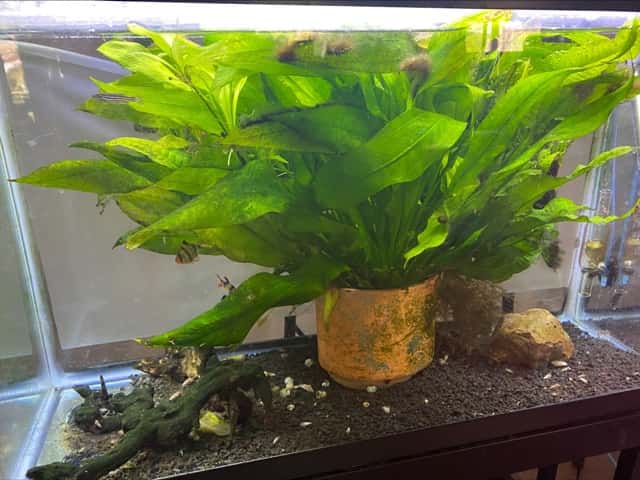
It all starts by buying the best ones. Tap this box to explore prices.
Ammonia In Your Fish Bowl
(or, “How to keep your bowl fish from dying.”)
Fish release ammonia into the water in their urine (yes, fish pee). Ammonia is also a byproduct of decomposition of fish food and plants. Ammonia is toxic to fish and will kill them in a day, maybe two at most.
Your job as a fish keeper is to make sure there is never any ammonia in your fish bowl. It is much, much easier than it sounds.
There are bacteria that love ammonia as their food. They consume ammonia and release nitrite. Nitrite is another chemical that is toxic to fish. Luckily enough, there are bacteria that love nitrite molecules as their food. They consume the nitrite and release nitrate into the aquarium. Nitrate in an aquarium is not harmful to fish.
Thankfully, these beneficial bacteria are just about everywhere. In the air, on inert surfaces, in the bowl of water you give to your dog. You only need one of each bacteria and you’re good to go…kinda.
Even though you only need one of each type of bacteria, they have to have a place to propagate in your fish tank. They also need food (ammonia), and time for the colonies to grow to sufficient size to protect your fish.
For propagation, you will need to add a substrate of some kind to the bottom of your fish bowl. Fish aquarium gravel is best. The bacteria will grow on anything in your aquarium, including the sides, but it needs a “place to call home.” Aquarium gravel is a suitable home.
In my 2 gallon aquarium bowl, I have a layer of black gravel about 1.5 inches thick. The gravel sits on top of a 2 inch thick layer of potting soil (a place for plant roots and beneficial bacteria). So I have about 4.5 inches of substrate that beneficial bacteria can call home. My aquarium bowl is only 8 inches high. This gives you an idea of how important I feel the beneficial bacteria is to maintaining a healthy fish bowl.
The hard part of controlling ammonia in a brand new aquarium bowl: You have to wait about four weeks before putting fish in your bowl. If your aquarium bowl is unheated, you’ll need to wait two additional weeks. The beneficial bacteria will build up during this wait. Because of your patience, your new fish will actually live when you put them in your fish bowl.
You can help the “cycling” process along by adding a tiny pinch of flake fish food to the fish bowl. Doing this every few days will allow the food to decompose and release ammonia to feed the growing beneficial bacteria colony.
Expert Advice:
Nitrifying bacteria, although naturally present in the environment, will take time to accumulate on biofilter media before they can efficiently remove all of the wastes produced by the fish. Setting up a tank and stocking it full of fish the same day, or even within a week or two, is a sure recipe for disaster. The bacteria in the biofilter can require three to eight weeks to cycle (i.e., become established) at 77-80 degrees F; even more time may be required at cooler temperatures https://www.fdacs.gov/Consumer-Resources/Recreation-and-Leisure/Aquarium-Fish/Aquarium-Water-Quality-Nitrogen-Cycle
Signs of ammonia in your aquarium fish tank
“This might be a good luck / bad luck article. I suspect that if you’re reading this; you have an ammonia problem in your aquarium already (bad luck). That said, I’ll help you as much as I can for your sake and the sake of your fish (good luck).”
Cleaning your aquarium bowl
There are two things I do to keep my 2 gallon aquarium bowl clean. Once a week I siphon out half the water using this tool (amazon link).
To remove algae, I use an aquarium magnet cleaner. When using this magnet, it helps that the sides of the bowl are flat. (amazon link)
What type of fish can be kept in a fish bowl?
There are many more fish then these that would do well in a fish bowl. When you’re shopping for fish bowl fish, check the final adult size of the fish you are considering by looking at the sales tags.
A rule of thumb is to place not more than one inch of fish in one gallon of water. I would expand on that and mention that there are small skinny fish and short fish with fat bodies. Take into account the body size of the fish and you should be ok.
Obviously small fish. Here are my top 5 choices (yes, I know, the last two aren’t fish but they are great additions):
Guppies
Females 1.5”
Males 1”
Tank size: 1+ gallons
Easy to care for.
Endlers Guppy
Females and males: 1.5” max
Tank size: 1+ gallons
Easy to care for
Image courtsey of Wikipedia
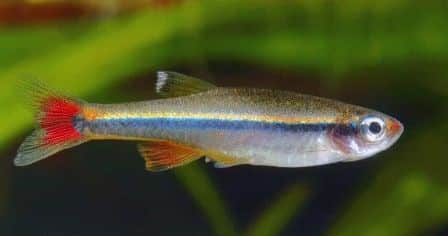
White Cloud Mountain Minnow
(cooler room temperature is fine)
Femaes and males: 1.25 inches
1 to a gallon – White Cloud Mountain minnows are schooling fish, need six minimum – you need a 6+ gallon bowl
Care: Very easy
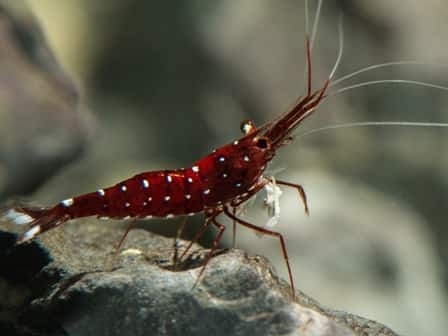
Freshwater Shrimp
Depends on what species. Generally 1”
2 per gallon
Care: easy to very difficult

Ramshorn Snails
(They will eat the food the fish miss and they will eat any algae that shows up.
About ½ inch
Care: Easy
There are many more fish then these that would do well in a fish bowl. When you’re shopping for fish bowl fish, check the final adult size of the fish you are considering by looking at the sales tags.
A rule of thumb is to place not more than one inch of fish in one gallon of water. I would expand on that and mention that there are small skinny fish and short fish with fat bodies. Take into account the body size of the fish and you should be ok.
Question: “How long will a betta fish live in a fish bowl?”
Answer: There are two answers to this question
1. A caring fish keeper who takes good care of the fish bowl, the betta and also heats the bowl will have a betta that will live for 2 to maybe 3 years.
2. A neglected betta might live a couple of months.
Feeding the fish in your fish bowl
In my opinion, you should only feed flake food to a fish bowl fish (vs frozen foods or tablets). I suggest this because it is easier to control the amount of food you are putting in the bowl, therefore preventing overfeeding the fish or allowing uneaten fish food to rot and create an ammonia spike.
When feeding your fish (or shrimp or snails) you need to consider how big their stomach is. I would say probably as big as this letter: o.
Now that you have a feel for how big a small fish’s stomach is, you can estimate the amount of food to feed them. The keywords are “just a tiny amount.” Another consideration is that if just dropped on the top of the water, those flakes that are eaten by the fish will swell up in the stomachs. Too much swelling food will lead to ruptured internal organs which of course leads to the fish dying.
Feed your fish the tiny amount of food twice a day. To control overfeeding, I would suggest allowing your fish to fast one 24-hour period per week. This will allow the fish to empty its digestive system.
Decorating your fish bowl
Really, the sky’s the limit when decorating your fish bowl. Walk the decorating aisle of your local fish store to get good ideas. Just leave room for the fish!
An interesting idea I came across was to add fairy lights around the aquarium bowl.
Decorating with aquarium plants
My first choice when decorating a fish bowl is adding aquarium plants. They are attractive and provide your fish with oxygen.
Below are some good plants to keep in your fish bowl. These plants need bright indirect light for a while during the day.
Below are 3 plant possibilities for your nano aquarium / fish bowl:
The Best Freshwater Aquarium Fish for Beginners in 2024
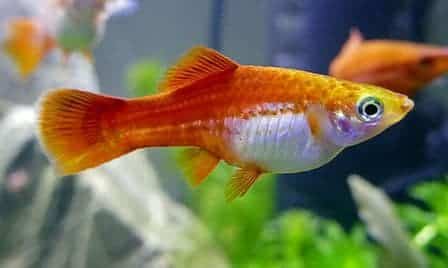
You can do the math; population control is a must. The bad news is that guppies rarely eat their offspring. You will want a predator fish, like an angelfish, in with your guppies to keep the numbers down.

Baby Tears:
Grows to 1 or 2 inches high.
Needs good light to grow.
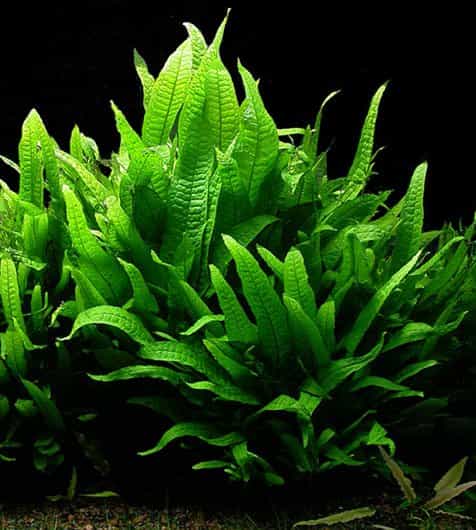
Java Fern
Gows to 8″
Super easy and hard to kill.

Duckweed
Floats on top of the water. Super easy plant.
5 tips to keeping a Healthy Fish Bowl
1. Overfeeding your fish will kill them and lead to a stinky bowl. Who wants that? Don’t overfeed your fish.
2. Heat your fish bowl. Heating with a under the bowl reptile heater will keep the fish and the beneficial bacteria healthy and happy. Or you can dress your fish up in tiny winter coats or maybe a small hoodie..
3. Water changes. Change 50% of the fish bowls water at least every month. More often would be better. Clean, fresh water will make your fish happy. In addition, there are nasty bacteria and protozoa that inhabit every tank that will kill your fish (“Fish TB”). These nasties grow more abundant over time. Changing your water will keep those nasties in check.
4. Consider adding an air bubbler (air pump) or a hang on the edge aquarium filter to your fish bowl to increase the dissolved oxygen in the water. Extra oxygen is good for the fish and good for the beneficial bacteria. https://www.fdacs.gov/Consumer-Resources/Recreation-and-Leisure/Aquarium-Fish/Aquarium-Water-Quality-Dissolved-Oxygen
5. Use an aquarium water conditioner that rids your tap water of chlorine and chloramine. I think that all community water companies add ammonia and / or chloramine to their water to kill bacteria. The side effect of these chemicals is that they will kill your beneficial bacteria and your fish.
If you don’t add water conditioner and your fish live, you’ll want to give them a going away party, because they will soon be dead of chlorine poisoning or ammonia poisoning because the ammonia eating (beneficial) bacteria is now dead.
I’ve used this water conditioner for 30 years and can recommend it. (Amazon link)
Frequently asked questions about fish bowls (Fish Bowl FAQ):
Question: “Do fish like fish bowls? Are fish bowls cruel?”
Answers: As far as I can tell, fish don’t have emotions, so they can’t like or dislike their fish bowl. They, like all animals, are just trying to stay alive. It’s instinctual.
Are fish bowls cruel? If you do a good job of maintaining your fish bowl, then no, fish bowls are not cruel. The fish benefit from living in a bowl by not having to worry about predation.
A neglected bowl is cruel. I’ve always been of the mind that the fish, like any pet, are your responsibility to take care of as best as you can.
Question: “The inside of my fishbowl is slimy. Gross! What should I do?”
Answer: The slime is beneficial bacteria. If the slime isn’t interfering with your view, leave it alone.
If the slime is interfering with your view of the inside of the fish bowl, wipe it off with your hand or if the sides of your fish bowl are flat, you can use a fish aquarium magnet cleaner. If your water looks dirty after this, do a water change.
Question: “My fish bowl stinks! What should I do?”
Answer: Stop overfeeding your fish. The smell is decomposing food. Unfortunately, if your bowl stinks, there is a good chance your fish are now on their last “fin” and will probably die soon.
To stop your bowl from stinking and maybe save your fish, siphon out most of the water and replace it with fresh clean water. Add an aquarium water conditioner.
Question: “Can I keep my fish bowl in a sunny window?”
Answer: No. Let’s assume the bowl is sitting on the windowsill of a sunny window. That much sun will overheat the water and the fish. Your fish will die and then you’ll be left with warm fish stew.
A sunny window in the winter in most U.S. states will be very cold. If you might enjoy a cold, refreshing fish popsicle, then go for it.
Question: Do I need a cover for my fish bowl?
Answer: Excellent question. It really depends on what type of fish you have in your fish bowl. Very active fish could be “jumpers”. More sedate fish, like a betta fish, will be fine without a cover.
If you use a cover, leave enough a space for fresh air to circulate over the water’s surface.
Question: Can the fish in my fish bowl run out of oxygen?
Answer: Yep, fish can run out of oxygen in a fish bowl. Imagine a betta fish in a small tank, plus beneficial bacteria all competing for what little oxygen there is. This will lead to very low levels of dissolved oxygen in the water. Luckily for the betta, he can gulp air to supplement the oxygen.
Small air pumps are cheap. Buy one and some tubing and an airstone. By adding an air pump to your fish bowl, you make it way more healthy. Here is an air pump I purchased recently from Amazon. It comes with tubing, air stones and water check valves for $16.99 at the time of this writing
Additional Reference
Besides the references cited in this article, I also briefly referenced this excellent article:
Grow Your Own Live Fish Food – 8 Easy Types
“To the container, add lettuce, spirulina, yeast or best, farm animal dung. Fill your container with conditioned water and your choice of the mentioned ingredients.”
You can turn your aquarium fish hobby into an income producing side hustle.
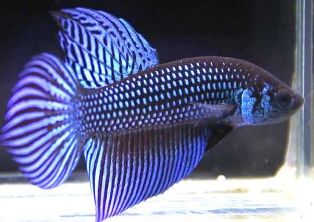
Create a website like mine to earn enough to buy aquariums, or fish, or equipment or if you work hard enough, retire from your 9 to 5.
I used "Divi" website creator to make this website. It costs $89/year (this comes out to about $7/month.)
Tap this ad to find out more.
